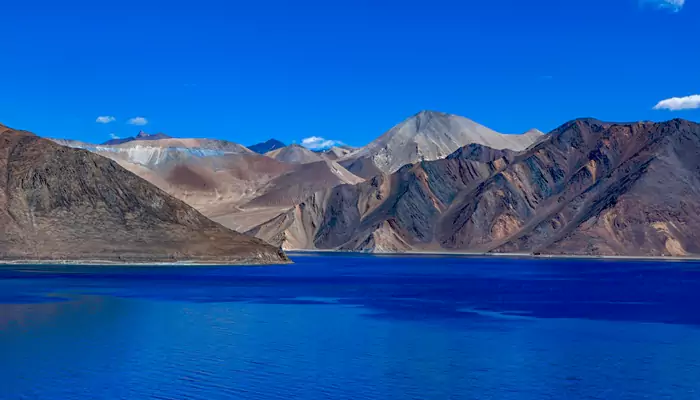Explore India's wildlife conservation efforts & the 10 key initiatives safeguarding its biodiversity. Dive deep & learn more!
India, a land of vibrant culture and breathtaking landscapes, is also a biodiversity
hotspot. From the snow-capped Himalayas to the lush rainforests of the Western Ghats, our country is home to a stunning array of wildlife, found nowhere else on Earth.

Think of the majestic Bengal tiger, the graceful Indian elephant, the elusive snow leopard, and the iconic one-horned rhinoceros.
These magnificent creatures, along with countless other species, enrich our natural heritage and play a crucial role in maintaining the delicate balance of our ecosystems.
However, India's rich fauna faces serious threats like habitat loss, poaching, human-animal conflict, and climate change which casts a long shadow. Conservation efforts are essential to secure a future where wildlife thrives alongside our communities.
They also ensure that future generations can experience the wonder of India's natural world.
Conservation in India: vital for environment, culture, and economy through diverse initiatives
Conservation means protecting, preserving, and managing natural resources in a responsible and sustainable manner. It involves safeguarding habitats, protecting endangered species, combating poaching, raising awareness, and promoting eco-friendly practices.
In India, conservation is not just an environmental imperative, but also a cultural and economic one. Our forests and wildlife provide essential ecosystem services, such as clean water, pollination, and climate regulation.
They also support the livelihoods of millions of people, particularly in rural communities. Recognizing the importance of wildlife conservation, India has undertaken a wide range of initiatives to protect its natural heritage.
These efforts combine government policies, scientific research, community involvement, and technological innovation.
Key conservation efforts in India: Project Tiger & Project Elephant conserve wildlife & habitats
Here are 10 key conservation efforts that are playing a vital role in protecting India's unique wildlife: First, Project Tiger This flagship initiative, launched in 1973, aims to conserve the iconic Bengal tiger and its natural habitat.
Through the establishment of tiger reserves, strict anti-poaching measures, and habitat management, Project Tiger has contributed significantly to the increase in tiger population in India. Second, Project Elephant.
Launched in 1992, Project Elephant focuses on protecting the Indian elephant, its habitat, and migration corridors. The project aims to mitigate human-elephant conflict, prevent poaching, and ensure the long-term survival of this keystone species.
It is critical in maintaining the health and stability of forest ecosystems.
Third, Protected Area Network
India has a well-established network of national parks, wildlife sanctuaries, and conservation reserves. These protected areas provide safe havens for wildlife, preserving their habitats and allowing populations to recover.

Fourth, Combating Poaching Strict anti-poaching measures, including the deployment of well-trained forest guards, the use of technology for surveillance, and collaboration with local communities, are crucial in preventing the illegal hunting and killing of wildlife. Fifth, Habitat Restoration.
Efforts to restore degraded forests, grasslands, and wetlands are essential for providing wildlife with food, shelter, and breeding grounds. These initiatives improve the ecological health of ecosystems and enhance their capacity to support biodiversity.
Active afforestation, reforestation, and removal of invasive species are crucial components.
Sixth, Community Conservation
Engaging local communities in conservation efforts is essential for long-term success. By providing alternative livelihoods, promoting eco-tourism, and raising awareness about the importance of wildlife conservation, communities can become active partners in protecting their natural heritage.
Seventh, Wildlife Crime Control Bureau (WCCB): This statutory body combats organized wildlife crime by collecting intelligence, investigating cases, and coordinating with other law enforcement agencies.
The WCCB plays a crucial role in dismantling poaching networks and preventing the illegal trade of wildlife products. Eighth, Conservation Breeding Programs: These programs aim to breed endangered species in captivity and then release them into the wild to augment wild populations.
Successful conservation breeding programs have helped in the recovery of species. These programs are vital for preserving genetic diversity and securing the future of threatened species.
Ninth, Use of Technology
Technology plays an increasingly important role in wildlife conservation. Drones are used for surveillance, camera traps monitor animal populations, and GPS tracking helps to understand animal movements. These tools provide valuable data for conservation planning and management.

Tenth, Awareness and Education: Raising awareness among the public about the importance of wildlife conservation is essential for promoting positive attitudes and behaviors. Education programs, campaigns, and outreach activities can help to create a more informed and responsible citizenry.
In conclusion, protecting India's unique wildlife requires a multifaceted approach that includes government policies, scientific research, community involvement, and technological innovation.
By strengthening these conservation efforts, we can ensure a future where both humans and wildlife can thrive in harmony.
AI Generated Content. Glance/InMobi shall have no liability for the content













